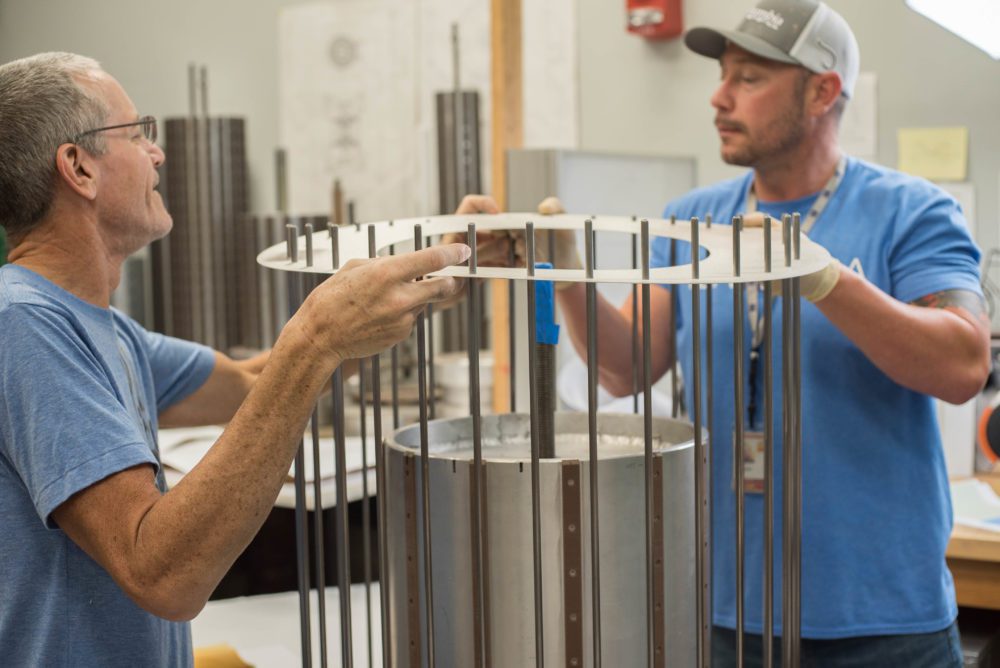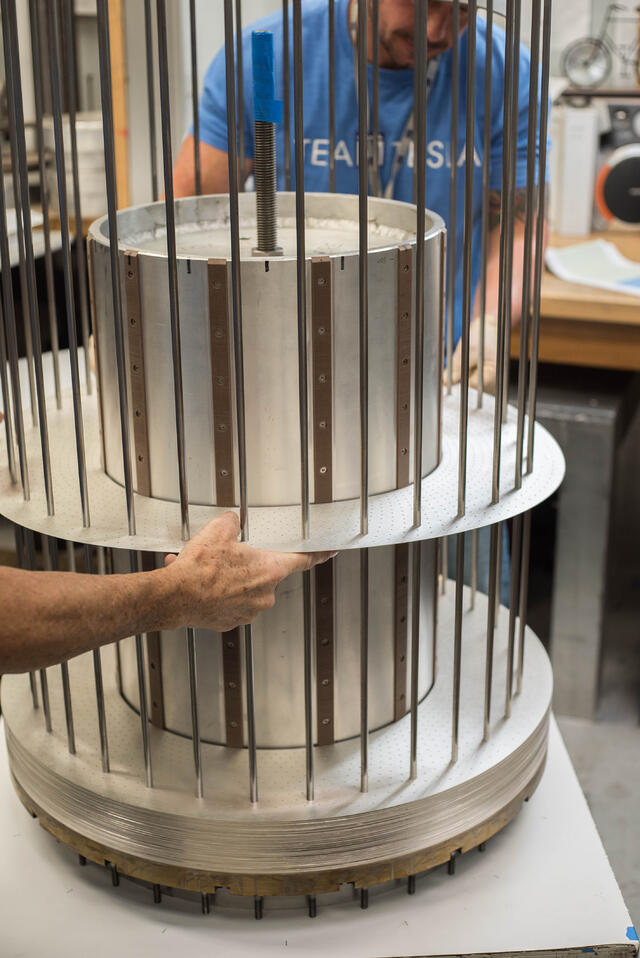An alternative to machining and stamping
PARTS FOR HIGH-POWERED MAGNETS
The Challenge:
NHMFL (National High Magnetic Field Laboratory) was looking for an alternative to stamping or machining that could complete their thin copper alloy discs faster, maintain precision, and stay on budget.
As the largest and most advanced magnet lab in the world, the NHMFL develops and manufactures record high performance research magnets that push science and innovation on all applications employing magnetic fields (e.g magnetic resonance imaging, solid physics, bio-chemistry, etc.). Applied magnet technologies range from resistive direct current and pulsed magnets to superconducting magnets as well as hybrid magnets.
Each water cooled resistive magnet coil is created by vertically stacking large quantities of copper alloy discs with varying hole patterns forming cooling water passages. Quantities of these so called Florida-Bitter disks needed in each coil section depend on the energy density along the coil axis. The lifetime of the magnet can span from months to years, based on the temperature regime and mechanical stress level the winding is exposed to while in use. And, because of the inherent variability of the magnet’s life expectancy, NHMFL needed to create a stock of magnet components ready to be used for immediate replacement. Their go-to production method of stamping (most effective for producing thousands of disks using costly high precision stamping dies) or machining (only cost effective for manufacturing a few dozen parts) was proving to be too costly and too slow. They needed a company that could quickly meet the medium demand of hundreds of copper alloy discs and still maintain high quality standards.
The Response:
Switzer’s task was to prove that NHMFL’s precision metal parts can be made without exception to tolerance, quickly, and in a cost effective manner. Using photochemical etching, Switzer was able to demonstrate the benefits of etching to the researchers at NHMFL.




